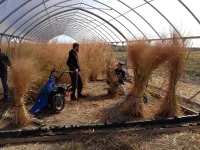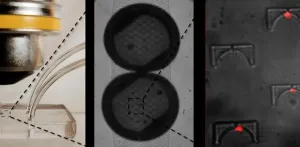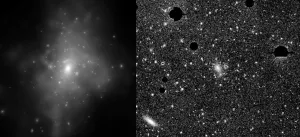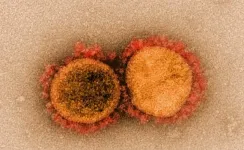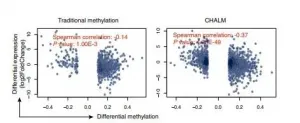(Press-News.org) Irvine, Calif., Jan. 27, 2021 -- One of President Joe Biden's first post-inauguration acts was to realign the United States with the Paris climate accord, but a new study led by researchers at the University of California, Irvine demonstrates that rising emissions from human land-use will jeopardize the agreement's goals without substantial changes in agricultural practices.
In a paper published today in Nature, the team presented the most thorough inventory yet of land-use contributions to carbon dioxide and other greenhouse gases (including nitrous oxide and methane) from 1961 to 2017, taking into account emissions from agricultural production activities and modifications to the natural landscape.
"We estimated and attributed global land-use emissions among 229 countries and areas and 169 agricultural products," said lead author Chaopeng Hong, UCI postdoctoral scholar in Earth system science. "We looked into the processes responsible for higher or lower emissions and paid particularly close attention to trends in net CO2 emitted from changes in land use, such as converting forested land into farm acreage."
The researchers learned that poorer countries in Latin America, Southeast Asia and sub-Saharan Africa experienced the most pronounced surge in these "land-use change" emissions.
East Asia, South Asia and the Middle East produced fewer greenhouse gases as a result of land-use change, according to the study, but the regions' agricultural emissions were growing strongly as output raced to keep up with population expansion. And more affluent North America, Europe and Oceania showed negative land-use change emissions but nonetheless substantial farm-originated pollution.
"While the situation in low-income countries is critical, mitigation opportunities in these places are large and clear," said senior author Steve Davis, UCI associate professor of Earth system science. "Improving yields on already cultivated land can avoid clearing more carbon-dense forests for cultivation of soybeans, rice, maize and palm oil, thereby drastically reducing land-use emissions in these countries."
The authors suggest that nations in emerging and developed markets also can lessen the emissions intensity of agriculture by adopting more efficient tilling and harvesting methods, by better soil and livestock waste management, and by reducing food waste.
In addition, dietary changes could help, according to the study, which says that while red meat supplies only about 1 percent of calories produced globally, it's responsible for up to a quarter of the world's land-use greenhouse gas emissions.
Europe has the lowest land-use emissions, at 0.5 tons per person per year, the researchers note, but the figure is substantially higher almost everywhere else, and as the planet's population continues to increase, farmers and policymakers will need to meet and exceed current best practices.
The paper highlights some promising technological solutions, such as new ways of cultivating rice that create less methane and dietary supplements for cattle that reduce their harmful emissions by up to 95 percent.
"Feeding the planet may always generate substantial greenhouse gas emissions," said Davis, a member of the executive board of UCI's Solutions that Scale initiative which seeks answers to the planet's most pressing climate and environmental problems. "Even if we get emissions down to European levels worldwide, with expected population growth, we could still be looking at more than 5 gigatons of land-use emissions per year in 2100, an amount at odds with ambitious international climate goals unless offset by negative emissions."
The project - funded by the National Science Foundation, the German Research Foundation, and the Gordon and Betty Moore Foundation - also included researchers from the University of California, San Diego; Colorado State University; Stanford University; and Germany's Max Planck Institute for Meteorology.
INFORMATION:
About the University of California, Irvine: Founded in 1965, UCI is the youngest member of the prestigious Association of American Universities. The campus has produced three Nobel laureates and is known for its academic achievement, premier research, innovation and anteater mascot. Led by Chancellor Howard Gillman, UCI has more than 36,000 students and offers 222 degree programs. It's located in one of the world's safest and most economically vibrant communities and is Orange County's second-largest employer, contributing $5 billion annually to the local economy. For more on UCI, visit http://www.uci.edu.
Media access: Radio programs/stations may, for a fee, use an on-campus ISDN line to interview UCI faculty and experts, subject to availability and university approval. For more UCI news, visit news.uci.edu. Additional resources for journalists may be found at communications.uci.edu/for-journalists.
Gardeners and farmers around the country recognize that crop varieties grow best in certain regions. Most plant species have adapted to their local environments; for example, crop and ornamental seeds sold for the upper Midwest are often very different than those bred for Texas. Identifying and breeding varieties that have high productivity across a range of environments is becoming increasingly important for food, fuel and other applications, and breeders aren't interested in waiting decades to develop new crops.
One example is an ongoing collaborative effort to improve the emerging bioenergy crop ...
The development of cost-efficient, portable microscopy units would greatly expand their use in remote field locations and in places with fewer resources, potentially leading to easier on-site analysis of contaminants such as E. coli in water sources as well as other practical applications.
Current microscopy systems, like those used to image micro-organisms, are expensive because they are optimized for maximum resolution and minimal deformation of the images the systems produce. But some situations do not require such optimization--for instance, simply detecting the presence of pathogens in water. One potential approach to developing a low-cost portable microscopy system is to use transparent microspheres in combination with affordable ...
In September, a team led by astronomers in the United Kingdom announced that they had detected the chemical phosphine in the thick clouds of Venus. The team's reported detection, based on observations by two Earth-based radio telescopes, surprised many Venus experts. Earth's atmosphere contains small amounts of phosphine, which may be produced by life. Phosphine on Venus generated buzz that the planet, often succinctly touted as a "hellscape," could somehow harbor life within its acidic clouds.
Since that initial claim, other science teams have cast doubt on the reliability of the phosphine ...
Car accidents are responsible for approximately a million deaths each year globally. Among the many causes, driving at night, when vision is most limited, leads to accidents with higher mortality rates than accidents during the day. Therefore, improving visibility during night driving is critical for reducing the number of fatal car accidents.
An adaptive driving beam (ADB) can help to some extent. This advanced drive-assist technology for vehicle headlights can automatically adjust the driver's visibility based on the car speed and traffic environment. ADB systems that ...
A combination of observational data and sophisticated computer simulations have yielded advances in a field of astrophysics that has languished for half a century. The Dark Energy Survey, which is hosted by the U.S. Department of Energy's Fermi National Accelerator Laboratory, has published a burst of new results on what's called intracluster light, or ICL, a faint type of light found inside galaxy clusters.
The first burst of new, precision ICL measurements appeared in a paper published in The Astrophysical Journal in April 2019. Another appeared more recently in Monthly Notices of the Royal Astronomical Society. In a surprise finding of the latter, DES physicists discovered new evidence that ICL might provide a new way to measure a mysterious substance called ...
As surgeons balance the need to control their patients' post-surgery pain with the risk that a routine operation could become the gateway to long-term opioid use or addiction, a new study shows the power of an approach that takes a middle way.
In a new letter in JAMA Surgery, a team from Michigan Medicine at the University of Michigan reports on findings from a study of 620 patients who had surgery in hospitals across Michigan, had their painkiller use tracked, and took surveys within one to three months after their operations.
Half of the patients received pre-surgery counseling that emphasized non-opioid pain treatment as their first option. Some patients in this group received small, "just in case" prescriptions, but a third of them didn't receive any opioid prescription ...
LA JOLLA--A new study led by scientists at La Jolla Institute for Immunology (LJI) suggests that T cells try to fight SARS-CoV-2 by targeting a broad range of sites on the virus--beyond the key sites on the virus's spike protein. By attacking the virus from many angles, the body has the tools to potentially recognize different SARS-CoV-2 variants.
The new research, published January 27, 2021 in Cell Report Medicine, is the most detailed analysis so far of which proteins on SARS-CoV-2 stimulate the strongest responses from the immune system's "helper" CD4+ T cells and "killer" CD8+ T cells.
"We ...
INDIANAPOLIS--Researchers at the Indiana University Melvin and Bren Simon Comprehensive Cancer Center have identified how breast cancer cells hide from immune cells to stay alive. The discovery could lead to better immunotherapy treatment for patients.
Xinna Zhang, PhD, and colleagues found that when breast cancer cells have an increased level of a protein called MAL2 on the cell surface, the cancer cells can evade immune attacks and continue to grow. The findings are published this month in The Journal of Clinical Investigation and featured on the journal's cover.
The lead author of the study, Zhang is a member of the ...
Members of Syracuse University's College of Arts and Sciences are shining new light on an enduring mystery--one that is millions of years in the making.
A team of paleontologists led by Professor Cathryn Newton has increased scientists' understanding of whether Devonian marine faunas, whose fossils are lodged in a unit of bedrock in Central New York known as the Hamilton Group, were stable for millions of years before succumbing to waves of extinctions.
Drawing on 15 years of quantitative analysis with fellow professor Jim Brower (who died in 2018), Newton has continued to probe the structure of these ancient fossil communities, among the most renowned on Earth.
The group's findings, reported by the Geological Society of America (GSA), provide critical ...
Irvine, CA - January 27, 2021 - A new University of California, Irvine-led study finds a new method for identifying biomarkers may aid in early cancer diagnosis. The study focused on lung cancer, however the Cell Heterogeneity-Adjusted cLonal Methylation (CHALM) method has been tested on aging and Alzheimer's diseases as well and is expected to be effective for studying other diseases.
"We found the CHALM method may be a valuable tool in helping researchers to identify more reliable differentially methylated genes from sequence-based methylation data," ...
